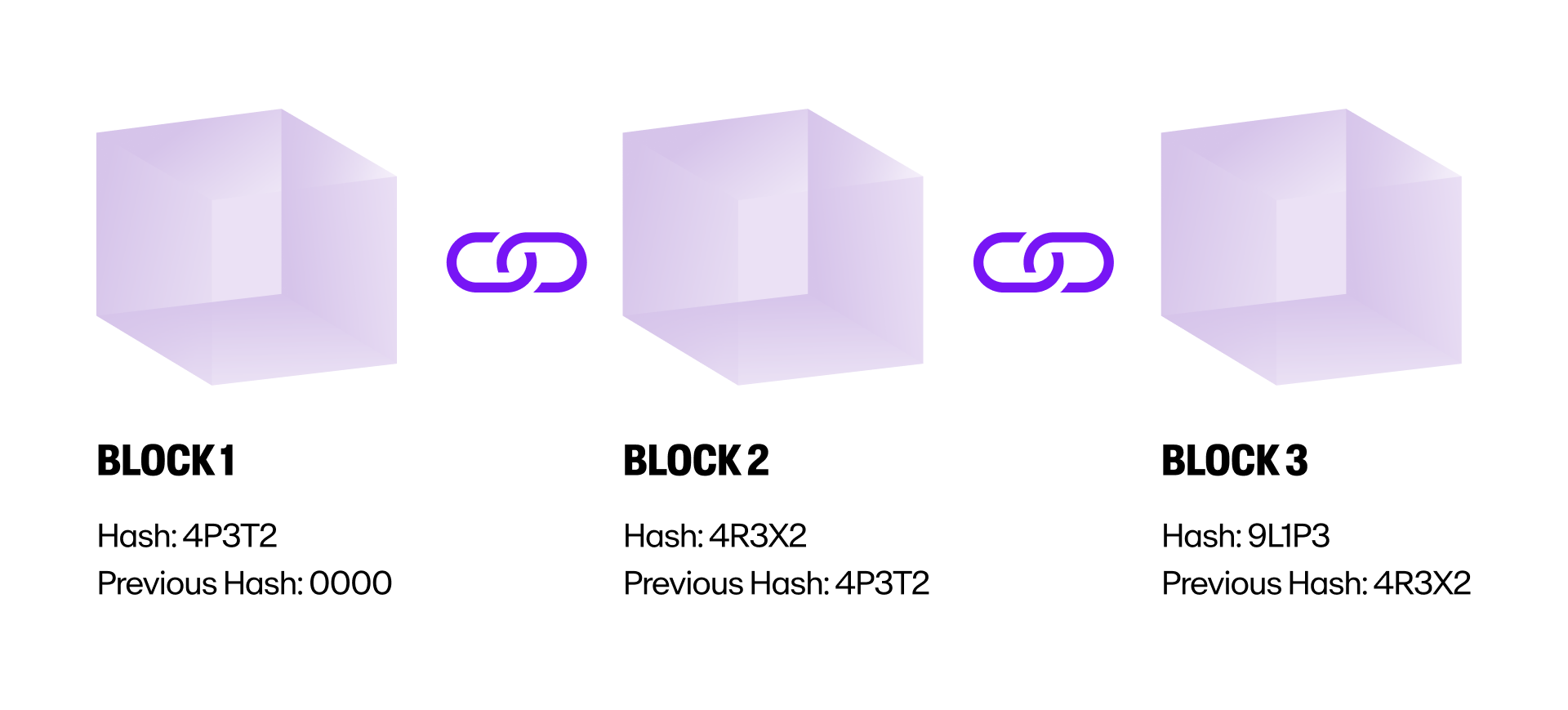A blockchain is a shared database of transactions that is distributed across a network of computers. Each computer maintains a copy of the entire database, which ensures transparency (visible to everyone in the network), security (protection against bad actors), and immutability (inability to alter or delete past records).
Further reading: What is blockchain? How blockchain technology works
“Block” + “chain”
Many are unaware that the term “blockchain” doesn’t appear in Satoshi Nakamoto’s 2008 whitepaper, which first introduced the concept. He (or she, or they) used the terms “block” and “chain”, and even “chain of blocks”, but never “blockchain”. As early as that year (2008), "block chain" (two words) was being used by prominent crypto evangelists like software developer Hal Finney. "Blockchain" as a single word, however, didn't fully catch on until 2016.
A “block” refers to a set of transactions that are stored together. Blocks are limited in size (the amount of transaction data they can hold) and sequentially linked to previous blocks, forming a chronological “chain” of transactions. This is where most people get confused, which is why an analogy comes in handy.
Sign up to our weekly MoonPay Minute newsletter
The cloakroom analogy
In his book Blockchain Basics, blockchain expert Daniel Drescher explains how blocks link together by comparing a blockchain to a cloakroom:
“Cloakroom tickets point to coat hooks that carry jackets. This is simple and straightforward. But what precludes you from putting a cloakroom ticket in the pocket of another jacket and storing that second jacket in the cloakroom as well? As a result, the latter cloakroom ticket points to a jacket that contains a cloakroom ticket, which in turn points to another jacket.”
Blockchains work like this. Each block is identified by a digitized fingerprint called a hash (the cloakroom ticket), and a reference to the previous block, or parent block. The only block that doesn’t point to a parent block is the genesis block, which is the very first block in a blockchain.

Terms you should know
- Node - A computer that participates in a blockchain network
- Block time - The time it takes for a block to be confirmed
- Fork - When an alternative version of a blockchain is created
- Asymmetric cryptography - System that uses pairs of public / private keys to encrypt / decrypt data
- Public Key - Used to receive transactions, similar to a bank account number
- Private Key - Used to sign transactions, similar to a bank PIN number
- Consensus mechanism - The set of rules used to verify transactions
- Proof of Work - Transactions are verified by solving complex math puzzles
- Proof of Stake - Transactions are verified based on the amount of cryptocurrency held by participants
Subscribe to our newsletter!
Did you like this article? Sign up to our weekly MoonPay Minute newsletter to get similar content delivered directly to your inbox.
